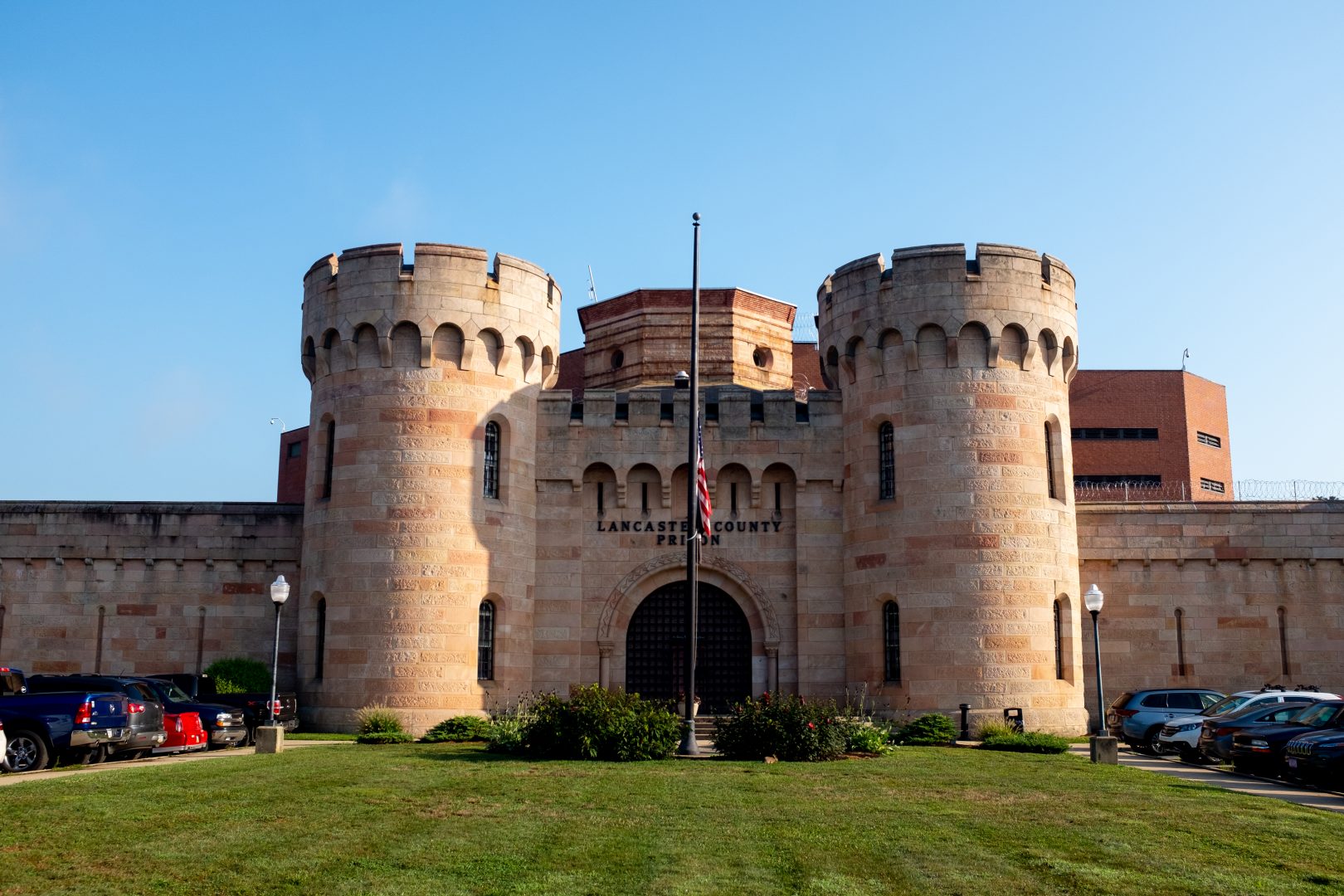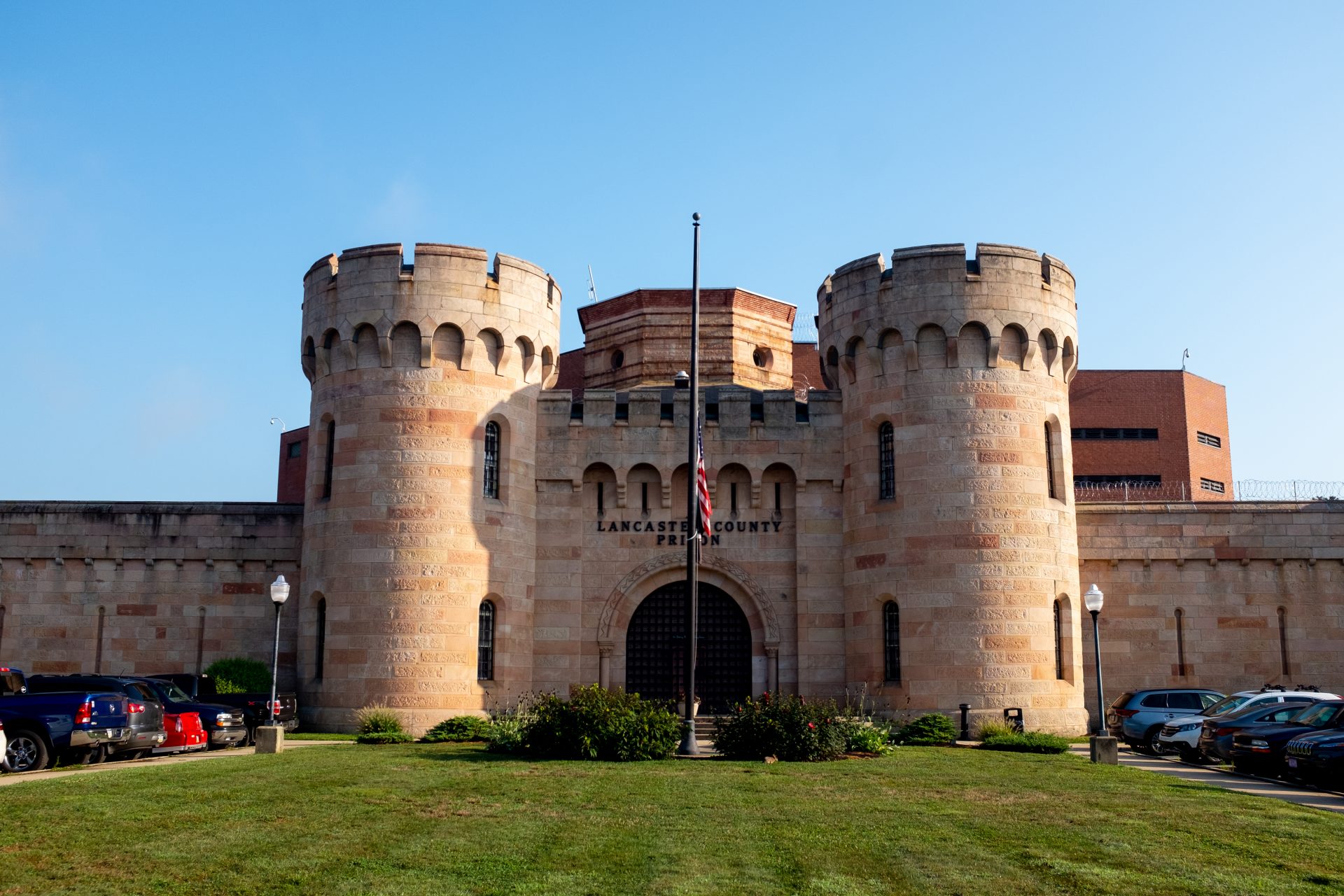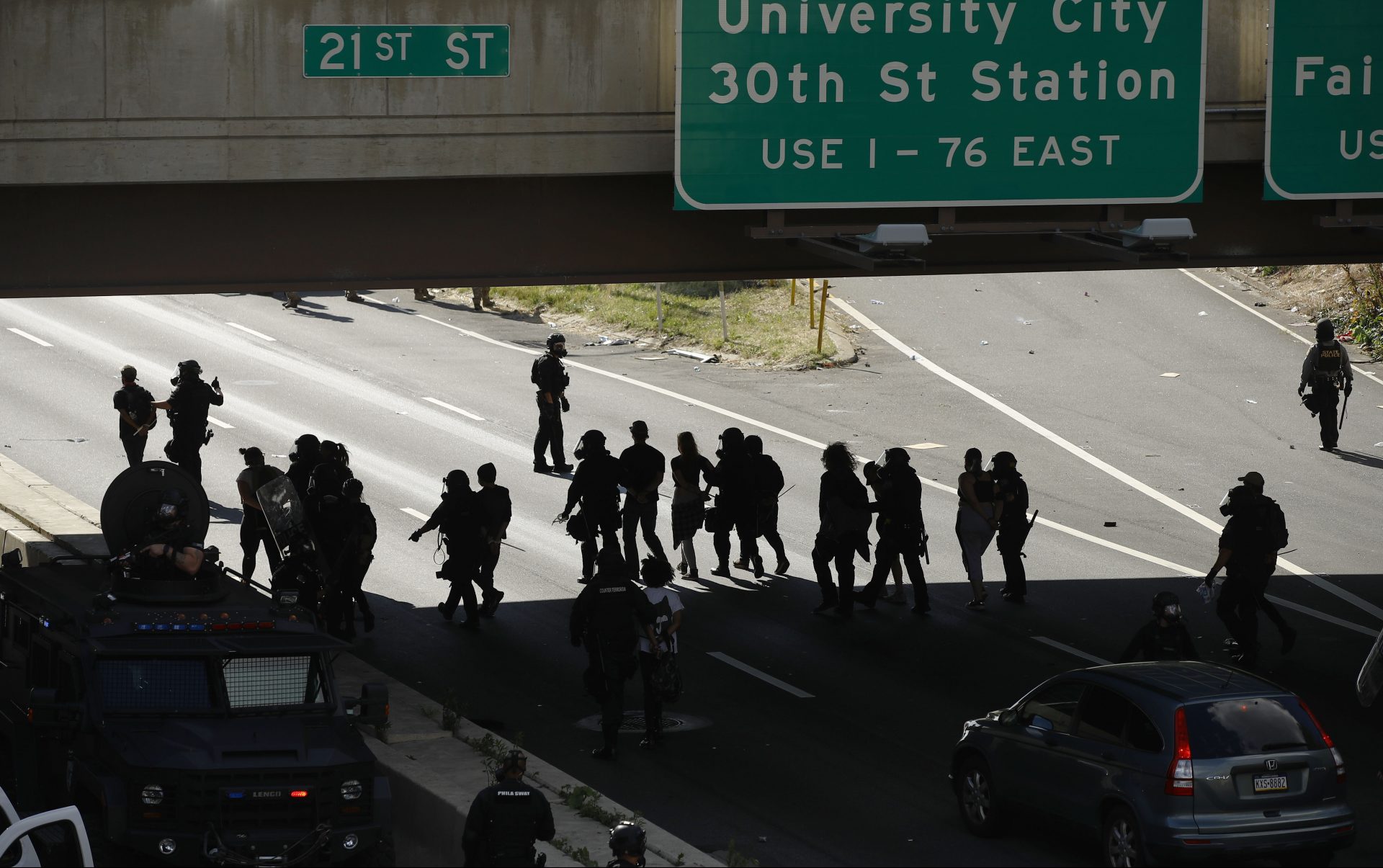
The Lancaster County Prison is seen in this photo taken Aug. 5, 2019.
Ian Sterling for WITF

The Lancaster County Prison is seen in this photo taken Aug. 5, 2019.
Ian Sterling for WITF

Ian Sterling for WITF
The Lancaster County Prison is seen in this photo taken Aug. 5, 2019.

Ian Sterling for WITF
The Lancaster County Prison is seen in this photo taken Aug. 5, 2019.
Last week the Pennsylvania Prison Society – an organization recognized in state law that advocates for both prisoners and staff at correctional facilities – sent an email blast announcing that COVID-19 cases have been detected at two county jails.
The jails couldn’t be farther from each other geographically. Luzerne is in Pa.’s northeast corner, while Fayette is clear across the state on the West Virginia border.
The introduction of the virus into two county jails is no surprise for anyone who has been following the COVID-19 epidemic. Predictably, cities were hardest hit, at first. But as metropolitan areas took measures to halt or slow the virus’s spread, rural communities often took a more lax approach (why would you need to socially distance when your closest neighbor is two acres away?). Months ago, we started to see how that approach failed to keep the virus contained.
But it’s hard to know how the epidemic is playing out inside county correctional facilities. Unlike how the state Department of Health monitors the numbers of positive COVID-19 cases inside nursing homes, the department does not do the same for county jails.
Only a small handful of counties actually publish the number of COVID-19 cases detected in their jails. Others make the information available in a press releases after conducting a round of mass testing, which is the practice ad the Dauphin County and York County prisons. But even in those cases, the public is getting mixed messages.
The York Daily Record reported that on one single day, the county jail gave three different versions of how many people actually had the virus. When we tried to get COVID-19 numbers from county jails for a story we published two weeks ago, multiple county jails said we had to first file Right-to-Know requests. One county official gave us the numbers more than two weeks after we requested them.
It’s also unclear what steps county jails are taking to segregate sick inmates from the healthy, or whether new inmates are quarantined to ensure they are not bringing the virus into a jail. At least four different county jails are refusing to disclose their coronavirus plans, forcing PA Post to argue in court or pursue mediation to see what policies are in place to deal with the pandemic.
But there is a larger issue at play in county jails, especially ones located in rural areas. It’s unclear how willing or able medical staff will be when it comes to treating the physical problems associated with coronavirus. That’s because, historically, there’s very poor quality in the medical care provided at county jails.
In Lebanon County, I reported on an inmate who nearly died of a tooth abscess because the jail didn’t have a dental chair (they were doing dental procedures in a rolling office chair). I also reported on an inmate in Montgomery County who died after the jail dismissed multiple signs of a serious thyroid illness.
Until jails become more transparent about their coronavirus testing, results and processes for dealing with sick inmates, we run the risk of the virus spreading outside the jail, just as it did in other cities that failed to manage the outbreak in their jails.
Related reads:
By me in PA Post: Tired of the politics, a press conference on prison reform is sidelined by its audience
How a virus spreads: This PEW study looked at how COVID-19 spread into the communities after the virus got into local jails.
ICE and COVID: Weeks ago, the New York Times published a visual investigation into how ICE detention centers knowingly deported positive COVID-19 patients to other countries. For the Intercept, hear the testimonials of people held in those centers.
“This guy is dying next to me”: A great example of poor oversight of county jails’ medical treatment of inmates … this incredibly disturbing story by The Marshall Project looks at how a county jail’s practice of holding an inmate, Billy Ames, in a restraint chair during a seizure lead to his death. From the top of this story: “The booking area was filled with the sound of banging, as Ames’s fellow detainees tried to get the jailers to let him out of the chair. They also heard the chair rattle against the floor—which suggested to the family he was having a seizure, meaning the jailers had failed to give him his anti-seizure medication. ‘He will not STOP screaming and freaking out,’ a jailer wrote in an email to the rest of the staff. Three others held near Ames recalled a jailer referring to him as a ‘piece of shit.’”
The Crime Report: ‘Dozens of Prisons’ Targeted in COVID-19 Civil Rights Lawsuits
Mother Jones: 7 Detainees Sued ICE. Then They Were Transferred to a Notorious Alabama Jail.

Matt Rourke / AP Photo
FILE—In this file photo from June 1, 2020, protesters march down Interstate 676 in Philadelphia, during a march calling for justice over the death of George Floyd. Three class-action lawsuits filed in Philadelphia on Tuesday, July 14, accuse the city of using military-level force against peaceful demonstrators protesting racial inequality and police brutality. (AP Photo/Matt Rourke, File)
Defunding campus police: The presence of campus police at the May 31 protest that resulted in police teargassing peaceful protesters is elevating new calls for how universities employ and use police officers. University of Pennsylvania and Drexel University both had officers aid local Philadelphia police in corralling protesters. But both universities were quick to say that the officers involved never flung teargas or harmed demonstrators.
Dip in enrollment: Every university in the state is experiencing a dramatic loss in money. COVID-19 has pushed students to put off college for a year, and while schools received federal funding to keep operations going, the dramatic plunge in finances has meant that many institutions are at risk. For PennLive, here’s a rundown of what every major college in the state is experiencing.
Get ready for the storm: As Tropical Storm Isaias gains more power and is expected to drive itself up the eastern coastline, parts of Eastern Pa. are under flood warnings.
In a word: Keith Burris, executive editor of the Pittsburgh Post-Gazette, has had his fair share of hot-takes, including how there is a war on free thought right now. His latest column adds onto that, arguing that people are becoming overly sensitive to words, and that cancel culture on both the right and left has made us unwilling to call things for what they are.
BIPOC: Speaking of “words,” this acronym has been popping up lately. Do you know what it means? It stands for Black, Indigenous and People of Color. Why are people using it now, rather than just “POC,” or people of color? It’s to make sure everyone is represented. From the New York Times: “We understand that under colonialism African and Indigenous people had very different experiences…To conflate everything in one is to erase, which is the very nature of genocidal practice.” People online are harumphing at the idea, but keep in mind it wasn’t too long ago that we started adding “T,” “Q” and “+” to the Lesbian, Gay and Bisexual acronym not too long ago. And it hasn’t hurt anyone by adopting it.
Representation: Philadelphia’s PhillyCAM is the first federally funded program to expand hiring and use more BIPOC within the media. And it’s hoping to be so successful among high school students that the goal is for students to not have to go to an expensive 4-year college program afterwards.
The Philadelphia Inquirer: Bankrupt Hertz is still wrongly accusing customers of stealing its cars, lawsuit claims
Lehigh Valley Live: Do I wear a mask on the D&L Trail? Experts offer guidance on narrow, outdoor spaces.
Pittsburgh Post-Gazette: Audit reveals food disparities, contract issues at Allegheny County Jail, Shuman Center
The days of journalism’s one-way street of simply producing stories for the public have long been over. Now, it’s time to find better ways to interact with you and ensure we meet your high standards of what a credible media organization should be.